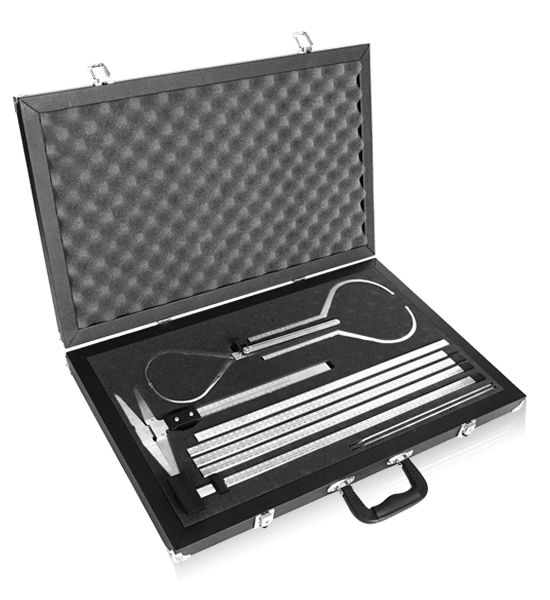Stunting is often campaigned and is still the main program for health agencies throughout the world. Quoted from Worldbank.org, stunting is a condition in which children experience growth failure due to chronic malnutrition and various illnesses during childhood. This happens especially when the fetus is still in the womb until the first 1000 days of birth. As a result, a child will have a short body size and experience slowness of thinking.

Malnutrition is an accident that continues to be a major public health problem throughout the world, especially in Indonesia, Southeast Asia, and sub-Saharan Africa. This is an indicator of malnutrition, has major consequences on human health as well as on the social and economic development of the population.
The countries that suffer the most from this problem are developing countries, economic, educational and socio-cultural conditions being an important factor underlying various causes of health problems and the growth of citizens. Reporting from tribune.com.pk, the three countries that have the highest stunting rates are India, Nigeria, and Pakistan. Meanwhile, the causes of stunting are quite complex.
Commonly divided into food environment, social environment, healthy environment, and environment.
Various Main Causes of Stunting in Children
As explained above, because it is quite complex, the following are some of the main causes of stunting:
- Still, the lack of access to nutritious food because it is classified as expensive.
- Lack of knowledge about nutritious foods and what is needed for fetal and baby growth.
- Lack of knowledge about how to ethically treat a healthy baby in a health context.
- Lack of knowledge to maintain a clean lifestyle during pregnancy and when considering children.
- The mother’s working conditions during pregnancy are not supportive of her pregnancy.
- Lack of maternal knowledge about nutrition before pregnancy, during pregnancy, and after childbirth.
- Limited access to health services, including services, support facilities, labour during pregnancy and postnatal care.
- Lack of access to clean water and daily sanitation.
- Experiencing chronic malnutrition for a long time.
How to Know Stunting
Then, what symptoms can be seen when a child has been stunted, here are the physical and cognitive signs of a child who has been stunted:
1. Children have a body that tends to be shorter for children their age
2. The child has a younger appearance but the body looks normal for his age
3. Less weight for children his age
4. Stunted bone growth
5. Tooth growth tends to be moist
6. Body condition and ability to remember and focus are quite weak
7. At the age of 8 to 10 years, children become quiet in their environment
Measurements Required to Detect Stunting
Stunting is hard and ongoing work. Babies will continue to be born every day and children will continue to grow into adulthood. Besides continuing to educate parents, the need to continue to monitor the development of children’s growth data in each region. Therefore, it is necessary to access health facilities in each region. A complete anthropometric instrument is required to measure various body conditions to detect whether a child has sufficient nutrition or not. The various measurements needed are:
1. Head Circumference
Head circumference is a standard procedure in medical science to examine the pathology of increasing head size, namely hydrocephalus, and microcephalus. Brain size has increased during the first year, but the size of head circumference does not reflect health and nutrition.
But nutritional anthropometry, the ratio of head circumference and chest circumference are significant in determining PEM for children.
2. Chest Circumference
Practiced in children aged 2-3 years, the growth of chest circumference will continue rapidly until the child is 3 years old. In children with PEM, slow growth of chest circumference with a ratio of the chest and head circumference before kids turn 1 year old.
3. High Knee
Knee height is almost related to height. Height is obtained from knee height for people who cannot stand or are elderly.
4. Soft Tissues
Muscle and fat are diverse soft tissues. Anthropometry can be done on the system to assess the nutritional status of the population.
5. Upper Arm Circumference of the Age
Upper arm circumference is related to weight and old index and weight and height. Like weight, upper arm circumference is an unstable parameter because it changes rapidly. Because it’s good for assessing the nutritional status of the present. Development of upper arm circumference according to Jellife (1996):
- In the first year of birth: 5.4 cm
- At 2-5 years of age: <1.5 cm
6. Thick Fat Under Skin According to Age
Measurement of body fat by measuring the thickness of fat under the skin (skinfold) performed on the upper arm (triceps and biceps), forearm (forearm), shoulder blades (subscapular), in the middle of the armpit line (midaxillary), side of the chest (pectoral), abdomen (pectoral) abdominal), suprailiac, thigh, kneecap (suprapatellar), mid-lower leg (medial calv).
In carrying out the measurements above, an anthropometry kit which has various measurement variations is needed. The anthropometer must have high detail and accuracy because it will affect the calculation of the ratio to see the nutritional conditions in children.

The anthropometer that we recommend can consist of several parts like the image below, which consists of stainless- steel beams that can be arranged lengthwise to measure height. And Spreading Calipers and Sliding Calipers have their respective functions for example to measure the circumference of the dada and also waist size. A complete description of the anthropometry tool can be read on the following link.

